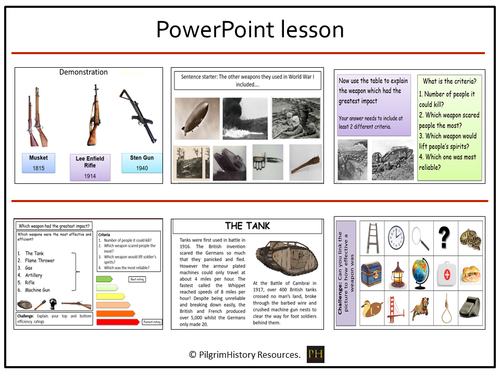


World War I
The aim of this lesson is to evaluate just how efficient and effective the new weapons of the Twentieth Century were.
Students have two objectives; to rate the effectiveness and killing power of the weapons used during the war and to explain how well equipped the soldiers were in the trenches, particularly the British Tommy.
The lesson begins with discussing the type of weapons used and for students to recognise the continuity and change of many of these pre, post and during World War 1.
The historian Dan Snow is quoted as saying the British soldier went into World War I ‘as the best prepared soldier on the planet.’
The lesson subsequently unfolds to explain and evaluate the new weapons used and the advantages (or not) they gave each side.
The plenary requires students to link the effectiveness of the weapons to images and to explain how and why this is the case.
This lesson is enquiry based with a key question using a lightbulb posed at the start of the lesson and revisited throughout the lesson and this unit of study to show the progress of learning.
The resource includes retrieval practice activities, suggested teaching strategies and differentiated materials, and comes in Powerpoint format if there is a wish to adapt and change.
Something went wrong, please try again later.
Great resource
Report this resourceto let us know if it violates our terms and conditions.
Our customer service team will review your report and will be in touch.